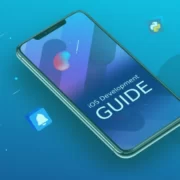Numerous coding languages are regularly used by programmers for a wide range of applications. Popular programming languages like JavaScript, C#, and Python are used by web and software Developers as full-stack development tools. Computer code is also used in electronics, social media marketing, automobile engineering, and medicine.

Strong coding Abilities are emphasised in computer science curricula. Most programmers concentrate on a range of languages and specialise in writing code for a particular project type, including e-commerce, gaming, or cloud-based systems. The guide that follows looks at your choices.
What Are the Coding Languages?
What is Coding? Coding languages allow computers to comprehend a wide range of commands and calculations. Humans can translate information into a language that computers can understand by writing code. Building websites, creating mobile applications, and managing cloud computing services all require coding languages.
Today, there are hundreds of different coding languages. For a specific kind of project, programmers frequently prefer a particular language due to its adaptability and simplicity. For instance, Python is the best language for artificial intelligence (AI) and machine learning, whereas C# is popular among gaming programmers and JavaScript is preferred by newcomers and for general web development applications.
What Purposes Are There for Coding Languages?
The universal language of connecting computers and cloud networks is computer code. Computers must know how to learn coding to operate on the internet, the world’s largest public network, as well as within their private networks.
To comprehend and carry out a command from code, a computer must go through many processes. The computer’s compiler tool transforms human-written code into binary code, which is then joined to the remainder of the coding sequence by the linker tool. The file can then be opened and launched on the computer to carry out the command.
Read: Top 10 Coding Secrets to Simplify Your Programming Journey
Some languages that share common ground can cooperate. For instance, some low-level and high-level languages can communicate with one another. Some components of one type of code may combine with another at the compiler stage of the code translation, making both intelligible to the computer in some cases.
What Are the Types of Programming Languages?
Programming languages are categorised and used for various specialised reasons. A particular stage of the translation process, such as machine, assembly, or high-level, may employ a particular language. The two major categories of programming languages are high-level and low-level.
High-level Coding Languages
High-level programming languages are the ones that are most removed from the actual code that translates commands on a computer system. C++, Java, and Python are some examples.
Low-level Coding Languages
Low-level programming languages have simple instructions that a computer can comprehend. There is minimal to no abstraction from the fundamental coding process involved. Machine code and assembly are two examples.
Coding Language Paradigms
Various styles are also present in coding languages. Languages written in an imperative, functional, logical, or object-oriented style are common. These coding language paradigms are available for programmers to select from to best meet their demands for a given project. Each has advantages and restrictions of its own. Here are some illustrations of each paradigm.
- Cobol, Fortran, or any procedural or imperative C
- Functional: Scala, Clojure, Haskell
- SQL, Prolog, and logic
- Object-Oriented: Python, C++, and Java
What Are My Options for Coding Languages?
Programmers should think about their motivation for learning to code and the kinds of tasks they enjoy most. Students who are interested in front-end programming are more likely to start with a user-facing language like JavaScript, whereas those who are more interested in back-end programming may start with Python or Ruby.
Source Coding language groups can be created according to where they are utilised in the stack. A language’s relationship to other legacy languages may also influence professionals’ decisions. Since they are simple to learn and give a strong foundation in coding, JavaScript, Ruby, and Python are quite popular among novices and have the potential to grow.
Languages for Front-End Web Development
The “client-side” of web development, or the user-interactive elements of a website, are handled by front-end development. Front-end programming languages like HTML, CSS, and JavaScript control every aspect of the user experience.
Performance and responsiveness optimization are the main goals of front-end developers. Front-end developers are reflected in every facet of user-facing content, including its design, organisation, and behaviour.
HTML
Hypertext Markup Language, as its name suggests, serves as HTML’s main purpose. HTML combines a markup language with hypertext (the connection between web pages) (the textual structure of the web pages). The front end of an HTML page is designed using a markup language.
CSS
Multiple web pages can be optimised and presented more easily with CSS, or cascading style sheets. Regardless of the HTML code for each page, programmers can use CSS to style multiple pages at once.
Javascript
Widely considered as possibly the most flexible front-end programming language, JavaScript is especially well-liked by websites that demand increased user interaction. For a wide range of applications, including websites with search features, games, and web-based software, programmers favour JavaScript.
Also Read: 10 Types of Bots And Everything You Should Know
Back-End Web Development Coding Languages
For a website or app to function, front-end and back-end development must collaborate. Although users are never directly involved in back-end operations, programming languages like Java, Python, and Ruby are essential to the smooth running of all functions and activities.
For jobs like writing application programming interfaces (APIs), creating libraries, and combining site pieces without a connecting interface, back-end developers may create code.
Java
One of the most accessible and well-liked back-end coding languages is Java. Java has components that are easily available to all programmers and may be utilised with a variety of frameworks. Front-end languages like CSS, JavaScript, and HTML are all compatible with Java.
Python
Python allows programmers to create back-end programmes fast and to increase their effectiveness. Python is well-liked for its ease of use, accessibility, and propensity for using natural language. This language’s interoperability with the Django framework may influence programmers’ decisions.
Ruby
Programmers creating e-commerce, social media, and stock marketing platforms continue to favour Ruby and its companion framework, Rails. Beginners appreciate Ruby on Rails as being very simple to learn since it is flexible and versatile. Additionally, Ruby is compatible with C and Java.
Read More: Top 10 Coding Secrets to Simplify Your Programming Journey
Enjoy your coding and good luck!
Sharing is Caring, don’t forget to share POST with your friends
















[…] is a tonne of online courses Available on the Internet that help you study Different languages in the comfort of your own […]